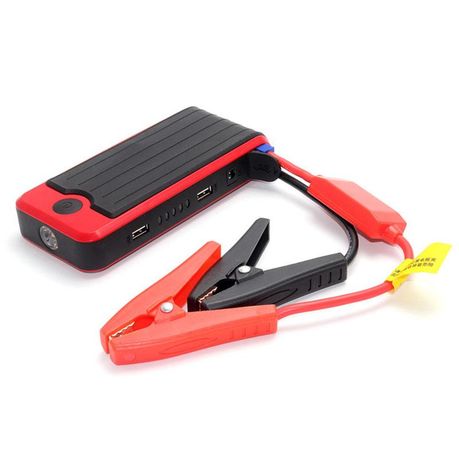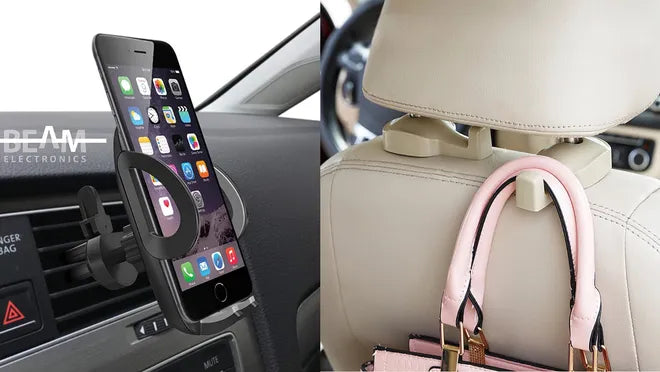The Ultimate Guide to Portable Car Battery Chargers: Stay Powered Anywhere, Anytime
Imagine being stranded on a desolate road with a dead car battery, far from the nearest repair shop or jump-start assistance. This is where a portable car battery charger can be a true lifesaver. In this comprehensive guide, we'll delve into the world of portable car battery chargers, exploring what they are, why they are essential, how to choose the right one, and tips for using and maintaining them effectively.

Chapter 1: Introduction to Portable Car Battery Chargers
Let's begin by understanding what portable car battery chargers are:
Portable car battery chargers, also known as jump starters or booster packs, are compact devices designed to provide the necessary power to start a vehicle with a dead or weak battery. These devices are equipped with rechargeable batteries, jumper cables, and various safety features to ensure a safe and reliable jump-start, even when you're far from civilization.
Chapter 2: Why Portable Car Battery Chargers Are Essential
Why should you consider owning a portable car battery charger? Here are some compelling reasons:
1. Emergency Preparedness
A dead battery can strike at any time and in any place, leaving you stranded. Having a portable car battery charger in your vehicle ensures that you're prepared for such emergencies, whether you're on a remote road trip or stuck in a parking lot.
2. Self-Reliance
Portable battery chargers allow you to jump-start your vehicle without needing another vehicle for assistance. This self-reliance can be a game-changer, especially in isolated areas.
3. Convenience
Rather than waiting for roadside assistance or relying on the goodwill of strangers, a portable car battery charger lets you get back on the road quickly, saving you time and hassle.
Chapter 3: Components and Features of Portable Car Battery Chargers
To choose the perfect portable car battery charger, it's essential to understand the typical components and features they should possess:
1. Battery Capacity
Battery capacity is measured in ampere-hours (Ah) and determines how many jumps a charger can provide before needing recharging itself. Look for a charger with sufficient capacity for your needs.
2. Jumper Cables
High-quality, insulated jumper cables are essential for safe and effective jump-starts. Look for sturdy, tangle-resistant cables with sufficient length.
3. Safety Features
Safety is paramount. Ensure your charger has features like reverse polarity protection, overcharge protection, and short-circuit protection to prevent accidents and damage.
4. USB Ports
Many modern chargers include USB ports for charging smartphones and other devices, making them versatile tools during emergencies.
5. Built-in Air Compressor
Some chargers come with built-in air compressors for inflating flat tires, providing even more utility in emergencies.
Chapter 4: Types of Portable Car Battery Chargers
Portable car battery chargers come in various types, each catering to specific needs and preferences. Common types include:
1. Traditional Jump Starters
These are compact and lightweight devices primarily designed for jump-starting vehicles. They are highly portable and efficient for their intended purpose.
2. Portable Power Banks
These chargers combine jump-starting capabilities with additional features like USB ports for charging devices. They are versatile and ideal for camping or emergencies.
3. Lithium-Ion Jump Starters
These units use advanced lithium-ion battery technology, offering high capacity and rapid charging. They are incredibly compact and efficient, making them a popular choice.
4. Solar-Powered Chargers
Solar-powered chargers harness the sun's energy to recharge their batteries. While they are eco-friendly, they may require more time to charge fully.
Chapter 5: Factors to Consider When Choosing a Portable Car Battery Charger
Selecting the right portable car battery charger involves considering several factors:
1. Vehicle Type
Consider the type of vehicles you'll be jump-starting. Ensure the charger is suitable for your car's battery type (e.g., lead-acid, AGM, lithium-ion).
2. Battery Capacity
Choose a charger with an adequate battery capacity to handle your vehicle's needs. A higher capacity is better for larger vehicles.
3. Portability
Consider the charger's size and weight. Ensure it's easy to carry and store in your vehicle.
4. Safety Features
Check for safety features like reverse polarity protection and short-circuit protection to prevent accidents.
5. Additional Features
If you require additional features like USB ports or an air compressor, choose a charger that meets these needs.
6. Brand Reputation
Opt for chargers from reputable brands known for their quality and reliability.
Chapter 6: How to Use a Portable Car Battery Charger
Once you've chosen the right portable car battery charger, it's crucial to know how to use it effectively. Here are the general steps for using a portable car battery charger:
1. Read the Manual
Start by thoroughly reading the charger's user manual. Familiarize yourself with its features and safety precautions.
2. Position Your Vehicles
Position the charger and your vehicle in such a way that the jumper cables can reach the dead battery comfortably without straining or stretching the cables.
3. Connect the Jumper Cables
Ensure both vehicles are turned off. Connect the red (positive) cable to the dead battery's positive terminal (+) and the other end to the positive terminal of the charger. Then, connect the black (negative) cable to the dead battery's negative terminal (-) and the other end to a metal, unpainted part of the vehicle's chassis, away from the battery.
4. Power On the Charger
Power on the charger, and wait for it to indicate that it's ready to jump-start. This may involve pressing a button or waiting for a light indicator.
5. Start Your Vehicle
Once the charger indicates it's ready, start your vehicle. If it doesn't start immediately, wait a few moments and try again.
6. Disconnect Safely
After successfully jump-starting your vehicle, power off the charger and disconnect the jumper cables in the reverse order of how you connected them.
7. Recharge the Charger
After use, recharge your portable car battery charger to ensure it's ready for the next emergency.
Chapter 7: Maintenance and Care of Your Portable Car Battery Charger
To keep your portable car battery charger in optimal condition, follow these maintenance tips:
1. Regular Inspection
Regularly inspect the charger for any visible damage or wear, including the cables and connectors.
2. Charge Before Storage
If you haven't used the charger for a while, recharge it to ensure it's ready when needed.
3. Keep It Clean
Clean the charger's cables and connectors regularly to prevent dirt and corrosion.
4. Store Properly
Store the charger in a cool, dry place, away from direct sunlight and extreme temperatures.
5. Test Periodically
Test your charger periodically to ensure it still functions correctly.
Chapter 8: Conclusion
In conclusion, a portable car battery charger is a versatile and essential tool that every vehicle owner should have in their arsenal. Whether you're facing a dead battery in the middle of nowhere or helping a fellow motorist in need, a reliable charger can make all the difference between being stranded and getting back on the road. By choosing the right charger, understanding how to use it, and maintaining it properly, you can ensure that you're prepared for any unexpected battery-related challenges that come your way.



